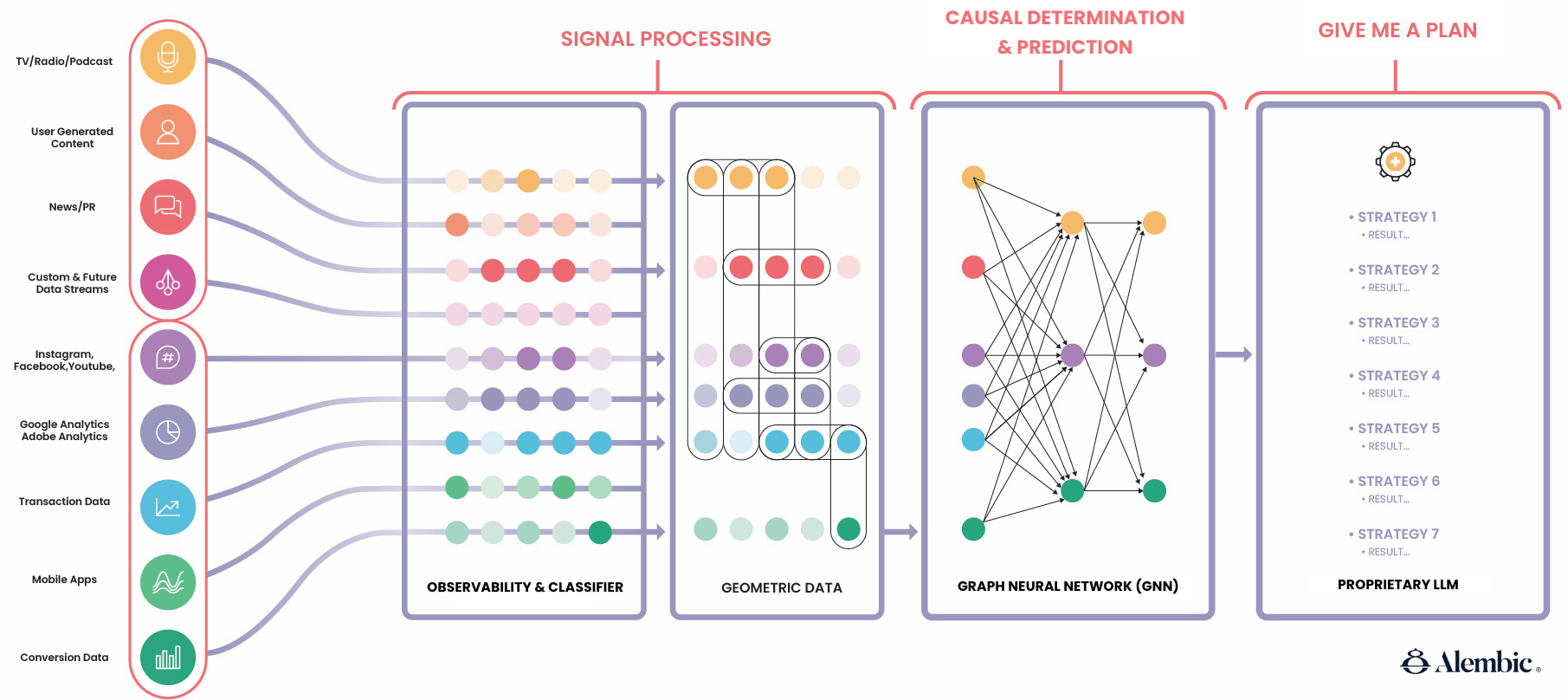Discover how companies are responsibly integrating AI in production. This invite-only event in SF will explore the intersection of technology and business. Find out how you can attend here.
Artificial intelligence startup Alembic announced today it has developed a new AI system that it claims completely eliminates the generation of false information that plagues other AI technologies, a problem known as “hallucinations.” In an exclusive interview with VentureBeat, Alembic co-founder and CEO Tomás Puig revealed that the company is introducing the new AI today in a keynote presentation at the Forrester B2B Summit and will present again next week at the Gartner CMO Symposium in London.
The key breakthrough, according to Puig, is the startup’s ability to use AI to identify causal relationships, not just correlations, across massive enterprise datasets over time. “We basically immunized our GenAI from ever hallucinating,” Puig told VentureBeat. “It is deterministic output. It can actually talk about cause and effect.”
Solving the hallucination problem
Hallucinations have been a major obstacle to enterprise adoption of AI systems like chatbots and virtual assistants. Leading AI models can generate realistic-sounding text, but they frequently produce false or nonsensical information, making them risky to deploy for business-critical applications. By eliminating hallucinations, Alembic aims to make AI safe and reliable enough for enterprises to use for a wide range of data analysis, forecasting, and decision-support needs.

To pull off this feat, Alembic built its own supercomputer infrastructure and developed new mathematical techniques for representing enterprise data as time-aware graph neural networks. “Each time we see one of these chain reactions or levers, we can understand all the primordial components of your business,” explained Puig. “Those all become like little mini neurons, and we put them into a ginormous graph neural network. But it is a causally-aware, time-aware graph neural network.”
Causal reasoning engine drives deterministic AI
At the heart of Alembic’s breakthrough is a new type of graph neural network that acts as a causal reasoning engine. This AI brain ingests data from a wide range of enterprise systems, from sales databases and marketing platforms to analytics tools and even TV and radio, and organizes it into a complex web of nodes and connections that captures how different events and data points relate to each other over time.
“It’s almost like a 3D representation of the enterprise,” Puig told VentureBeat. “Imagine you could see every interaction between every customer and every part of the business, and how those interactions cascaded through the organization to drive results.”
The key is that Alembic’s AI doesn’t just learn patterns and correlations from this data — it identifies the causal relationships that actually drive business outcomes. By understanding the “why” behind historical results, the system can predict the impact of future actions with a high degree of confidence, and even recommend the optimal interventions to achieve a desired goal.
The underlying neural network can extrapolate and generate projections when new data points are added, simulating the potential future impacts. “So when you inject a new node, it generates what it expects the chain reaction will be,” said Puig. This generative capability, built on Alembic’s custom “foundational model,” sets the company’s approach apart from the “mixture of experts” employed by other enterprise AI vendors, which Mr. Puig dismissed as “just microservices.”
Intense interest from Fortune 500 and analysts
Interest in Alembic’s AI breakthrough has been intense, with the company already engaged with 9% of the Fortune 500 after private briefings and endorsements from PhD experts at Nvidia and other large undisclosed customers, according to Puig. “When we showed it to [Forrester and Gartner], they basically lost it. I’ve never seen anything like it, they had me go to 26 analysts so far, on both the IT and the MarComms side.”
Alembic’s technology arrives at a critical juncture for enterprise AI adoption. Spending on AI technologies is expected to top $500 billion by 2024, according to IDC, but trust issues remain a major barrier. If Alembic can truly deliver enterprise AI that business leaders can rely on without the fear of embarrassing or costly hallucinations, it could help accelerate AI deployment across industries from finance to marketing to manufacturing.
With keen interest from early customers and the stamp of approval from influential analyst firms like Gartner and Forrester, Alembic appears positioned to shake up the crowded enterprise AI market. But the company still faces the challenge of proving its technology can scale beyond early pilots to drive concrete bottom-line results for large enterprises. As the AI race heats up, Alembic’s “hallucination-free” approach could become a key selling point—or a cautionary tale about the gap between research breakthroughs and real-world impact.

